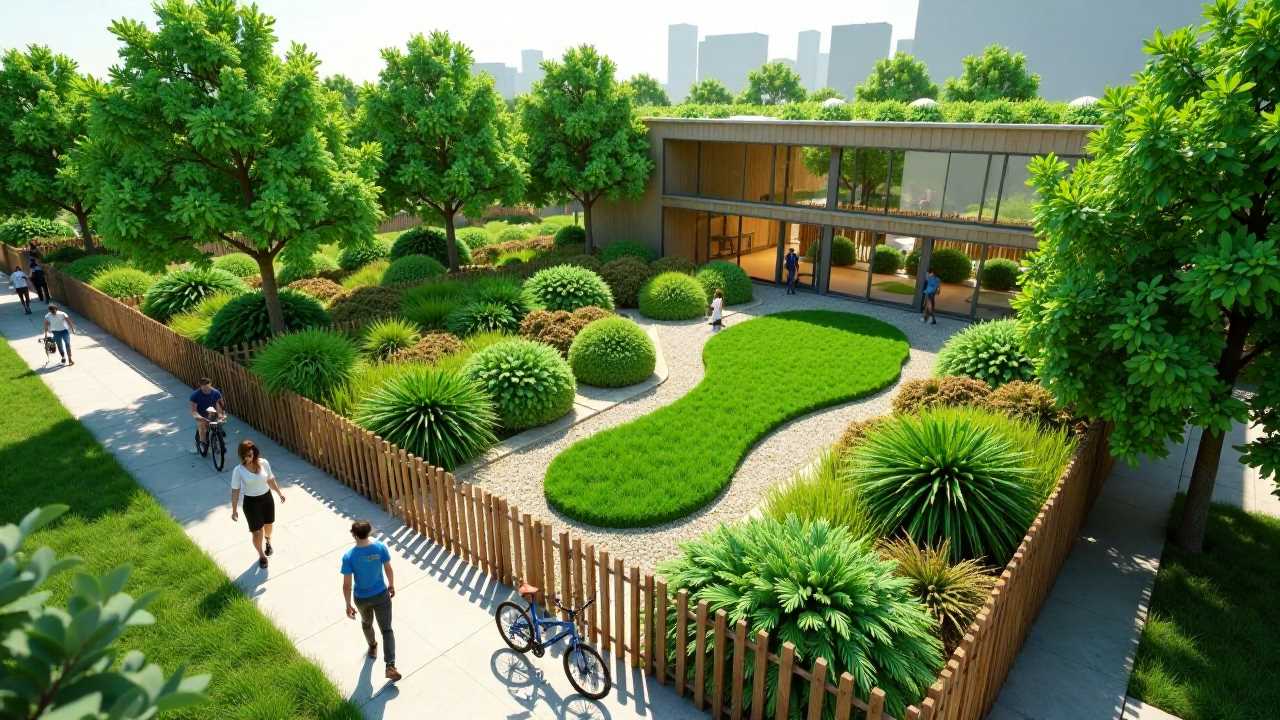
Understanding Sustainable Building Materials
Sustainable building materials are at the forefront of modern construction, representing a vital shift towards environmentally responsible practices. These materials are designed to minimize environmental impact while promoting health and well-being. By focusing on eco-friendly, renewable, and biodegradable options, we can significantly reduce our carbon footprint and contribute to a healthier planet.
Sustainable building materials encompass a wide range of products, from natural resources to recycled materials. They are characterized by their ability to be sourced, manufactured, and disposed of in ways that do not deplete natural resources or harm the environment. This approach aligns with the principles of lifecycle analysis, which evaluates the environmental impact of a material throughout its entire life cycle—from extraction to disposal.
The Importance of Eco-Friendly Materials
The term eco-friendly refers to materials that do not harm the environment during their production, use, or disposal. Using eco-friendly materials in construction can lead to healthier indoor environments, reduced waste, and lower energy consumption. For instance, materials such as bamboo, reclaimed wood, and straw bales are not only sustainable but also provide excellent insulation properties, reducing the need for energy-intensive heating and cooling systems.
Moreover, the use of eco-friendly materials can contribute to carbon-neutral building practices. By selecting materials that sequester carbon or have low emissions during their production, we can help mitigate climate change. For example, concrete alternatives made from recycled materials can significantly lower the carbon footprint associated with traditional concrete production.
Renewable Resources in Construction
Renewable materials are those that can be replenished naturally over time. This includes resources like timber, which, when sourced from sustainably managed forests, can provide a continuous supply without depleting ecosystems. The use of renewable materials is crucial in promoting sustainability in construction, as it reduces reliance on finite resources and encourages responsible land management.
Incorporating renewable materials into building designs not only supports environmental sustainability but also enhances the aesthetic appeal of structures. Natural materials such as wood and stone can create warm, inviting spaces that resonate with occupants, fostering a deeper connection to nature.
The Role of Biodegradable Materials
Biodegradable materials are those that can break down naturally without causing harm to the environment. These materials are particularly important in reducing landfill waste and promoting a circular economy. In construction, biodegradable options such as hempcrete, mycelium-based products, and natural fibers can be utilized to create structures that are both functional and environmentally friendly.
The integration of biodegradable materials into building projects can also lead to innovative design solutions. For example, using mycelium as a building material not only provides structural integrity but also contributes to improved air quality, as it can absorb toxins and release oxygen.
Resource Efficiency in Construction
Resource-efficient building practices focus on minimizing waste and maximizing the use of materials. This approach involves careful planning and design to ensure that every component of a building serves a purpose and contributes to its overall sustainability. Techniques such as modular construction and prefabrication can significantly reduce material waste and energy consumption during the building process.
By adopting resource-efficient practices, we can also lower construction costs and improve project timelines. This efficiency not only benefits builders and developers but also contributes to a more sustainable construction industry as a whole.
Lifecycle Analysis: A Comprehensive Approach
Lifecycle analysis is a systematic approach to evaluating the environmental impacts of building materials throughout their entire life cycle. This analysis considers factors such as raw material extraction, manufacturing processes, transportation, usage, and end-of-life disposal. By conducting a lifecycle analysis, we can make informed decisions about which materials to use in construction, ensuring that we select options that minimize environmental harm.
Implementing lifecycle analysis in the selection of sustainable building materials allows us to identify opportunities for improvement and innovation. For instance, we can prioritize materials with lower embodied energy, which refers to the total energy consumed in the production of a material. This focus can lead to significant reductions in greenhouse gas emissions and resource depletion.
A Call to Action for Sustainable Building
The shift towards sustainable building materials is not just a trend; it is a necessity for a healthier planet and future generations. By prioritizing eco-friendly, renewable, biodegradable, carbon-neutral, and resource-efficient materials, we can create structures that not only meet our needs but also protect the environment.
As we move forward, it is imperative that architects, builders, and consumers alike embrace sustainable practices and advocate for the use of sustainable building materials. By doing so, we can build a greener future that benefits both people and the planet, ensuring a legacy of sustainability for years to come.
 Business & FinanceHealth & MedicineTechnologyLifestyle & CultureScience & EnvironmentWorld NewsPrivacy PolicyTerms And Conditions
Business & FinanceHealth & MedicineTechnologyLifestyle & CultureScience & EnvironmentWorld NewsPrivacy PolicyTerms And Conditions
